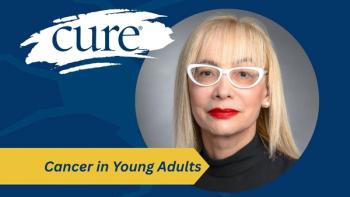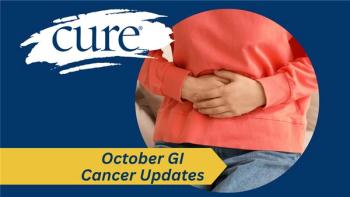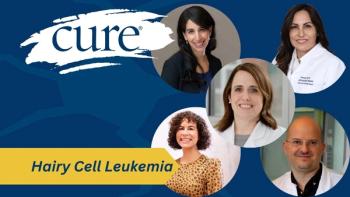
Angelina Jolie Pitt Shares Her Cancer Risk and Risk-Reduction Strategies, Inspires Others
On March 24, Angelina Jolie Pitt added another chapter to her BRCA mutation story, making public her choice to undergo a preventive salpingo-oophorectomy, removal of her ovaries and fallopian tubes to reduce her risk of cancer.
On March 24, Angelina Jolie Pitt added another chapter to her BRCA mutation story, making public her choice to undergo a preventive salpingo-oophorectomy, removal of her ovaries and fallopian tubes to reduce her risk of cancer.
Two years ago, Jolie Pitt announced that she had undergone testing for the mutations in the BRCA1 and 2 genes due to a strong family history of cancer on her mother’s side (“
In her recent piece for the New York Times, Jolie Pitt described in her “
A Conversation Starter
Amy Byer Shainman, a hereditary cancer health advocate, says Jolie Pitt’s public sharing of her experience has definitely made an impact when it comes to hereditary cancer awareness. “As an advocate, I view all of this as a huge step forward and progress—a very positive societal change.”
“Prior to Jolie coming forward, families affected by cancer may not have even known to have these conversations about hereditary cancer risk, or that such a thing as hereditary cancer even existed,” Shainman says. “Angelina sharing her story may now give families with family members who currently have cancer, or died of cancer, the thought that maybe the cancer in their family has a hereditary component, and perhaps they need to find out more.”
Women who inherit a BRCA gene mutation are at increased risk of developing breast or ovarian cancer, often before menopause. BRCA1 gene mutations raise the risk of pancreatic cancer and melanoma, while BRCA2 gene mutations increase the risk of pancreatic, stomach, gallbladder, melanoma and bile duct cancers. The risk also extends to men who carry the mutation, increasing the risk of male breast cancer, as well as pancreatic and prostate cancers. Those of Ashkenazi Jewish descent have a higher likelihood of carrying the mutation.
Joy Larsen Haidle, a genetic counselor and president of the National Society of Genetic Counselors (NSGC), says there was a noticeable uptick in interest in genetic testing, primarily for the BRCA gene mutations, after the actress-director’s first piece.
“When I think back to when she did her first op-ed, it created a huge amount of awareness and discussion amongst the general public,” she says.
To gauge the level of awareness of the “Angelina Jolie effect,” the NSGC conducted a study that found 90 percent of the genetic counselors surveyed had a significant increase in the number of calls to their offices immediately following Jolie Pitt’s first op-ed. The number of calls continued to increase for six months after publication and was still significantly higher one year later.
And while awareness of hereditary cancers is only one part of a complicated issue, Larsen Haidle is heartened by the increased dialogue.
“So much of the time when we’re talking about genetics with families, people who’ve already had cancer feel they don’t need to think about testing,” she says. “It’s still very useful to learn if the cancer happened by chance or if there is a genetic component,” pointing not only to a risk for other family members but also risk of a second cancer for the patient.
Families should consider genetic counseling if a close relative developed cancer before age 50, if someone in the group has a history of more than one cancer, if three or more relatives on one side of the family have developed cancer, or if there is a family history of certain cancers or aggressive cancers.
Larsen Haidle suggests that individuals who are concerned with hereditary cancer risk talk with a genetic counselor about testing, how to discuss the decision or results with family members, and how to develop a personalized strategy of risk reduction or surveillance based on the results of the test.
She also stresses that even a negative test result may not be conclusive. “A negative result doesn’t mean a person doesn’t have an inherited component, it just means the test didn’t answer the question.” A patient with a strong family history who tests negative could still have an unknown gene mutation or there could be limitations to the test.
“We still need to tailor surveillance to what we see in the family tree, and not assume there isn’t a risk factor,” Larsen Haidle says, unless a person has a true negative result. This means a mutation was identified in their family, which explained the familial cancers, but their test result did not match, demonstrating that they did not inherit the risk factor.
It’s also important for patients and survivors to examine both sides of their family trees. “Half of our hereditary risk comes from our father’s side of the family,” Larsen Haidle says. “Women can get caught off guard with cancer diagnosed at young ages if the connecting relative happens to be male.”
Other Hereditary Cancers
While Jolie Pitt has raised the level of public knowledge on the breast cancer gene mutations, it remains to be seen if she’s increased awareness of BRCA-related cancers in men and other hereditary cancers, such as von Hippel-Lindau syndrome, which can cause a predisposition to the development of kidney cancer.
“One of the hereditary colon cancer syndromes called Lynch syndrome is as common as the BRCA1 and BRCA2 gene mutation, but it hasn’t garnered as much attention,” Larsen Haidle says. “Five to 10 percent of all cancers will have a strong hereditary component.”
[Read “
Personalized Risk Reduction Strategies
If a person does have a hereditary cancer risk, either confirmed by a genetic test or through a family history examination, experts encourage individuals to seek genetic counseling, weigh options and not make quick decisions regarding risk reduction unless it’s advised by a medical professional.
[Read “
Jolie Pitt outlined how she waited two years before undergoing her latest surgery, being monitored regularly and taking time to prepare herself physically and emotionally for premature menopause. It was only after routine blood work pointed to an increase in inflammatory markers that could signal cancer that she moved up her timeline for surgery.
“Not everyone may choose surgery,” Larsen Haidle says. “They might choose to do heightened surveillance, particularly women who are young, or if the risk may be lower in that age range, and delay surgery until later to complete some of their life goals.”
Risk-reduction strategies are individualized decisions that incorporate one's personal family medical history plus one’s own medical history, beliefs and life goals—something Larsen Haidle says Jolie Pitt emphasized in her second op-ed. “There are lots of personal experiences that impact what a person chooses to do,” Larsen Haidle says. “It’s not a one-size-fits-all plan.”
Shainman understands that all too well, as she is a carrier of the BRCA1 gene mutation, too. After her sister was diagnosed with ovarian and uterine cancers, she decided to undergo a complete hysterectomy. She later underwent a prophylactic mastectomy. Shainman says the lack of reliable screening methods for ovarian cancer, including the CA-125 blood test, prompted her to make the decision to remove her ovaries.
“Removing my ovaries ensured I will not die of ovarian cancer. However, I do still carry a small risk for peritoneal cancer—1 to 4 percent risk,” she says. “Also, removing my ovaries prior to natural menopause actually cut my breast cancer risk in half, too.”
Following Jolie Pitt’s story has helped Shainman with her advocacy efforts promoting awareness of hereditary cancers, but also on a personal level. She has one more request of Jolie Pitt: “That she write an op-ed No. 3 about three months from now after her hormones have plummeted. I would love for her to discuss her menopausal experience, symptoms, and if she has had to adjust any hormones, medications.”
“This would be very helpful to so many women who have had their ovaries removed and are struggling with these post-surgery issues on a daily basis.”




